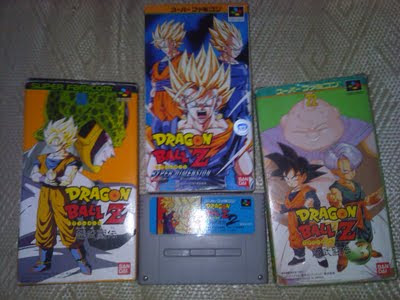My Guilty Gaming Pleasure
 |
| Just a flesh wound. |
We all have that guilty pleasure, something you know you shouldn't enjoy, but for some reason, you can't get enough of it.
This precludes all illegal stuff of course.
In gaming terms, this usually involves a game you know is so wrong in so many ways, but you still keep playing it time after time. It could be that Flash game you've got bookmarked, or that shooter you keep re-installing no matter how many times you uninstall it because it's 'broken'.
My poison of choice is Tekken.
Strangely, I didn't figure myself as a die-hard fighting game fan. I'm guessing taking up Aikido changed that, or it could have been just the influence of our High School arcade sessions, but for whatever reason, I got really into fighting games before long.
Fighting games, as we all know, are usually divided into 2D and 3D fighters. I would say the 'golden age' of 2D started with Capcom's Street Fighter II (Dash) Turbo in 1992. It was around this time that there were really good players coming out, and gradually, players paid attention to balance and fair gameplay rather than gimmicks (i.e., violence in Mortal Kombat, weapons-based combat in Samurai Spirits / Shodown, etc.). Even with fighting limited to a 2D plane, this was pretty hard to achieve as fighters needed to be distinct in their style, yet given equal footing such that a pretty good player could beat an average player with any character. This emphasised player skill and gave credence to the rising popularity of fighting game tournaments.
In 1993, SEGA released the first Virtua Fighter, bringing fighters into the 3rd dimension. The main draw for Virtua Fighter was having the most realistic fighting experience at that point in time, especially since projectiles and other special moves that have been a trademark of fighters was removed (presumably because the hardware was not powerful enough to handle calculations for 3D fireballs). However, Virtua Fighter has also become the de facto standard for applying balance to fighting games. Where other fighters have tiers that differentiate characters who have a higher probability of winning even among players of equal skill levels, no such tiers exist in VF. If there are tiers, the difference between characters is so thin, practically any character can compete with any other, given competent players.
The first Tekken was released in 1994, a result of Sega's and Namco's consistent one-upping of each other (witness Daytona USA and Ridge Racer, and Virtua Cop and Time Crisis). Tekken took a lot of concepts from Virtua Fighter and improved them (hit sparks being one of the most obvious, as well as texture-mapping, a relatively new technology at the time). While Tekken 1 & 2 play and move a bit like Virtua Fighter 1 & 2, the 2 rival series began to move away from each other, Virtua Fighter becoming more the 3D fighter flagbearer, pushing realistic 3D fighters as if it were a competitive sport (and hence its' focus on balance), Tekken had the goal of being the most fun. Thus, Tekken focused on combo-centric gameplay, and, more impressively, operates on practically per-polygon hit detection (meaning if polygons didn't hit, it doesn't count as damage)
 |
| I told you I could kick higher than your head! |
It gets even sillier.
Tekken 3 added Doctor Boskonovitch and Mokujin as playable characters. Doctor B was a guy who fought the practically the whole match lying down. Lying down. In a consistent and semi-permanent 'DOWN' state. (in fighter terms, a 'down' state applies to someone who got knocked down to the floor). Since most characters don't have a specific strategy against someone in a 'down' state, fighting him becomes an exercise in frustration. Talk about a joke character.
Mokujin on the other hand, takes a skilled player to fight with, or against. Mokujin changes his moveset every round and he essentially becomes a clone of every single character. However, the next moveset is always random, so using him takes some skill as you need to be proficient with every other character to use him effectively. But... Mokujin is a freakin' wooden training dummy. We've also had bears, kangaroos and dinosaurs in Tekken, but Mokujin just further cements Tekken's weirdness.
The latest game also exhibits one of Tekken's main flaws... there's just too many characters. Tekken 6: Bloodline Rebellion has over 40 characters. It may seem like a good thing, but you know what they say about spreading too thin. I'd prefer a few tightly focused and balanced characters over a smorgasbord of eye candy. The character select screen's starting to look like a Jeopardy board with pics instead of numbers.
 |
| I'd like the kangaroo for 2000 please, Alex |
Tekken fits my description of a 'broken' game. Getting good at Tekken feels like exploiting the game's features, rather than relying on player skill. Even with all this, though, I still play Tekken anytime I've got a few minutes. I don't have to work as hard at it as other fighting games, and after a whole day of programming, you just wanna shut off as much of your brain as possible.
Heck, I've bought Tekken 6 three times already (1 for Xbox 360, twice for PSP), so yes, guilty as charged.


Comments
Post a Comment